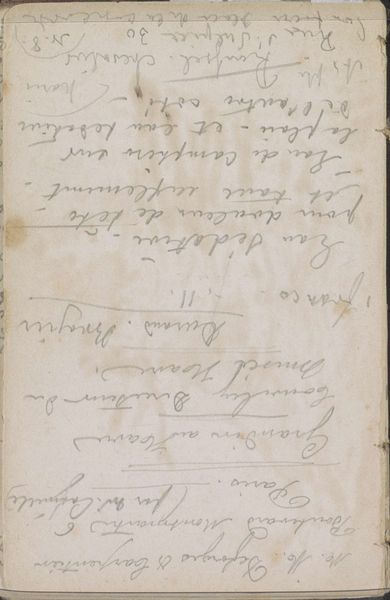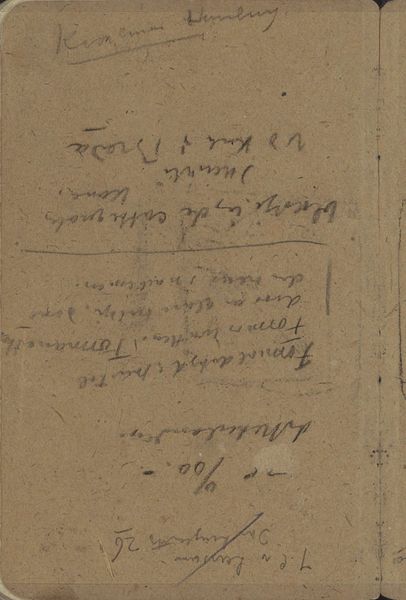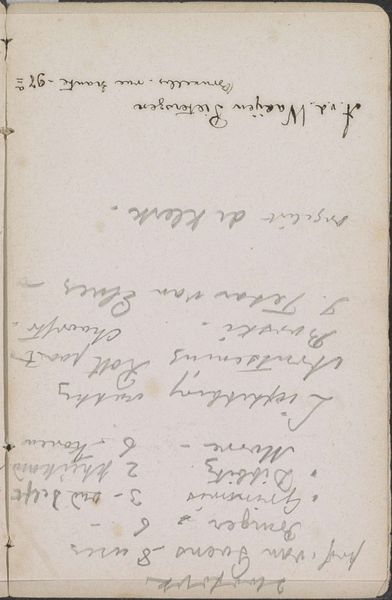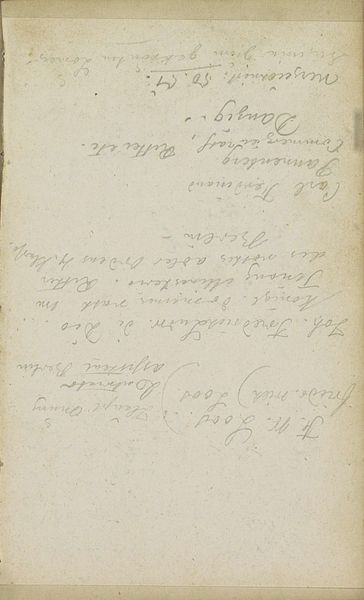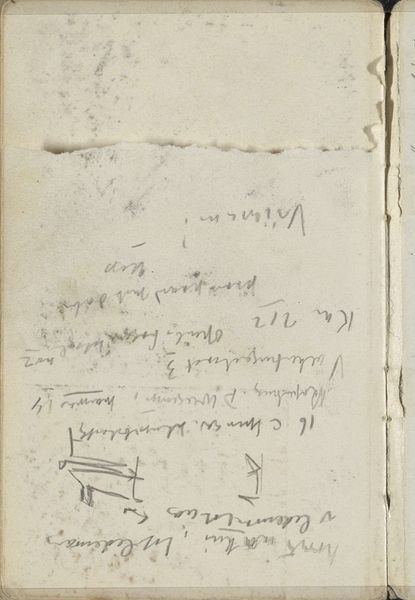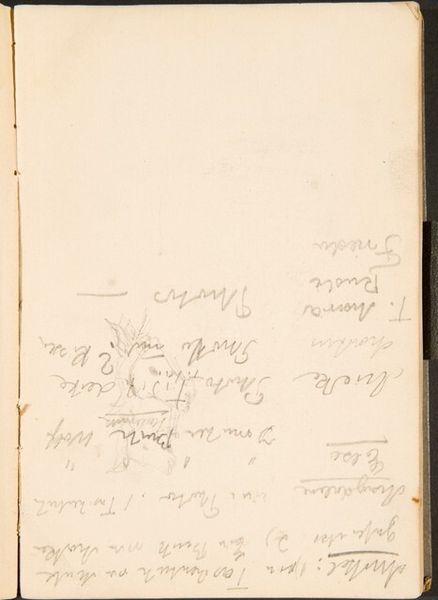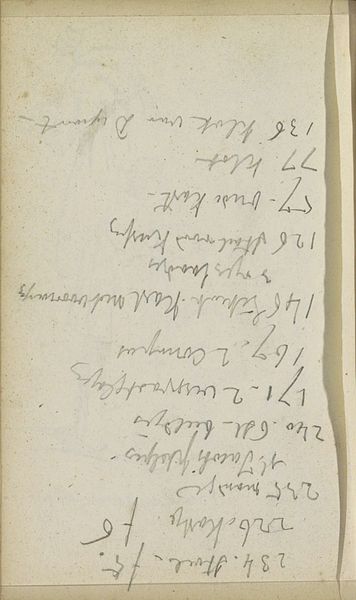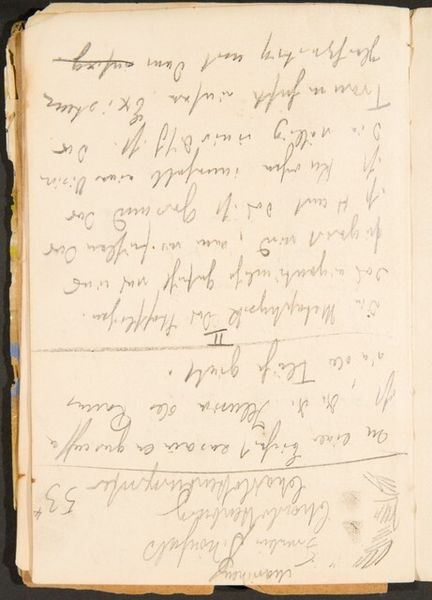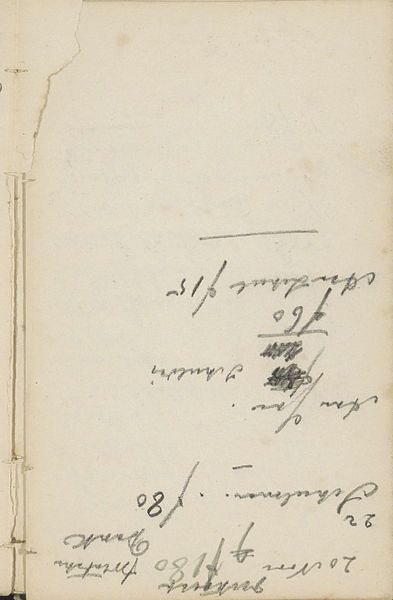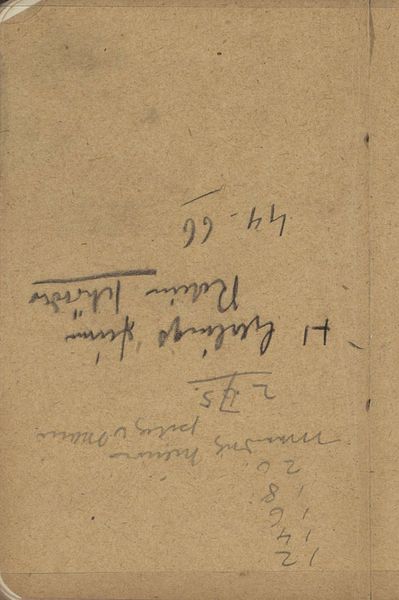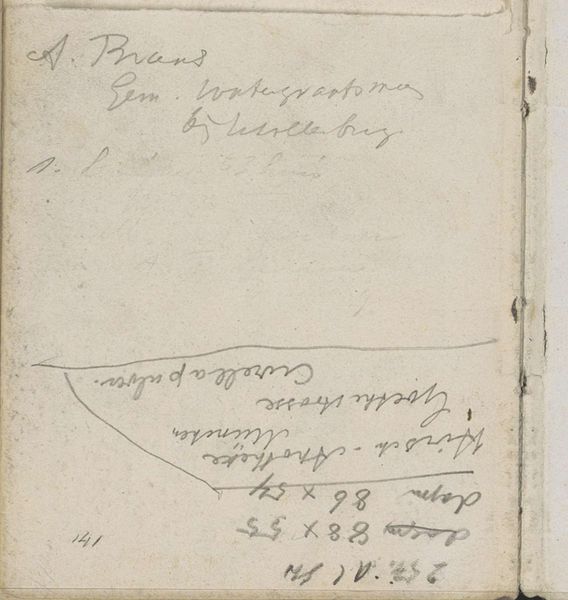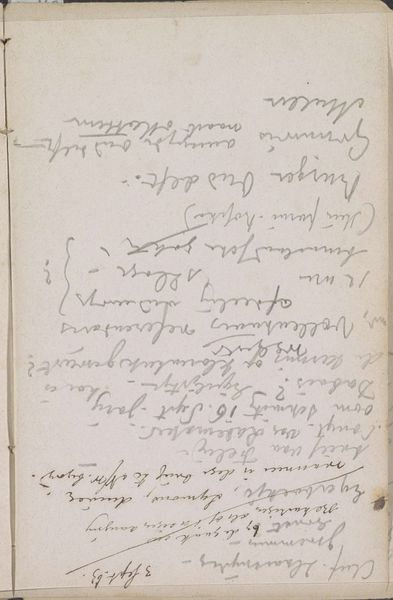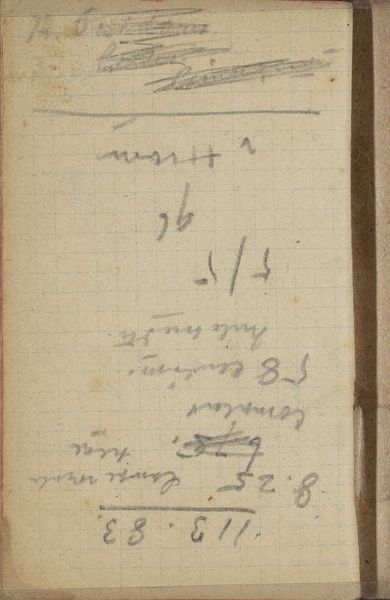
Copyright: Rijks Museum: Open Domain
Editor: This is "Annotaties," a drawing made with ink on paper by George Hendrik Breitner around 1915-1916. It’s part of his sketchbook and the loose script is quite fascinating but what stands out for me is the visible tear which gives the work a sense of being incomplete. How would you interpret this fragmented drawing? Curator: From a formalist perspective, the "tear" punctuates the work by creating visual discord and drawing attention to the materiality of the paper itself. Observe the composition – Breitner disrupts any potential for clear figuration with overlaid handwriting, complicating our ability to construct a singular image or narrative. What are your observations on the graphic qualities of the handwriting? Editor: I see the handwritten script varies in pressure and thickness, creating a texture that feels almost sculptural against the flatness of the paper. Do these annotations hold more meaning than their visual quality alone? Curator: Meaning is undeniably present, yet a formalist approach prioritizes the relationship between these visual elements: the texture of the ink, the varying density, the stark contrast of light and dark, and their orchestration within the defined space. Does this skew our attention more to Breitner's intentional use of contrasting strokes and fragmented script. Editor: Absolutely, by isolating these properties, we get closer to understanding Breitner's process and his focus on abstracting elements from observation into artistic forms, right? I now see that even something seemingly mundane like handwriting becomes an element to observe in and of itself. Curator: Precisely! The visible tear emphasizes the transient, process-oriented nature of art. It disrupts any notions of idealized form in representational landscapes, moving into further abstraction. What begins as words becomes texture.
Comments
No comments
Be the first to comment and join the conversation on the ultimate creative platform.
